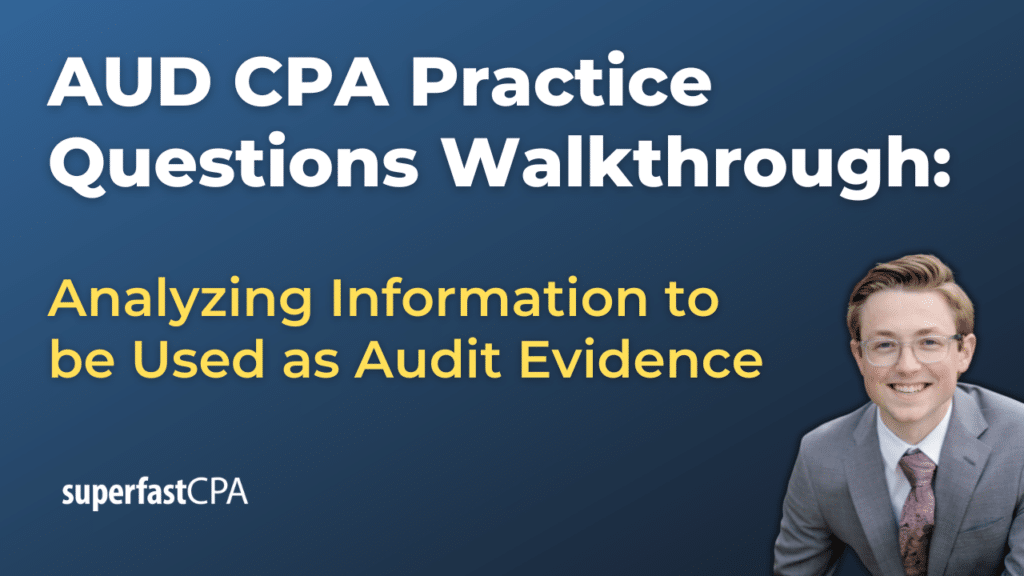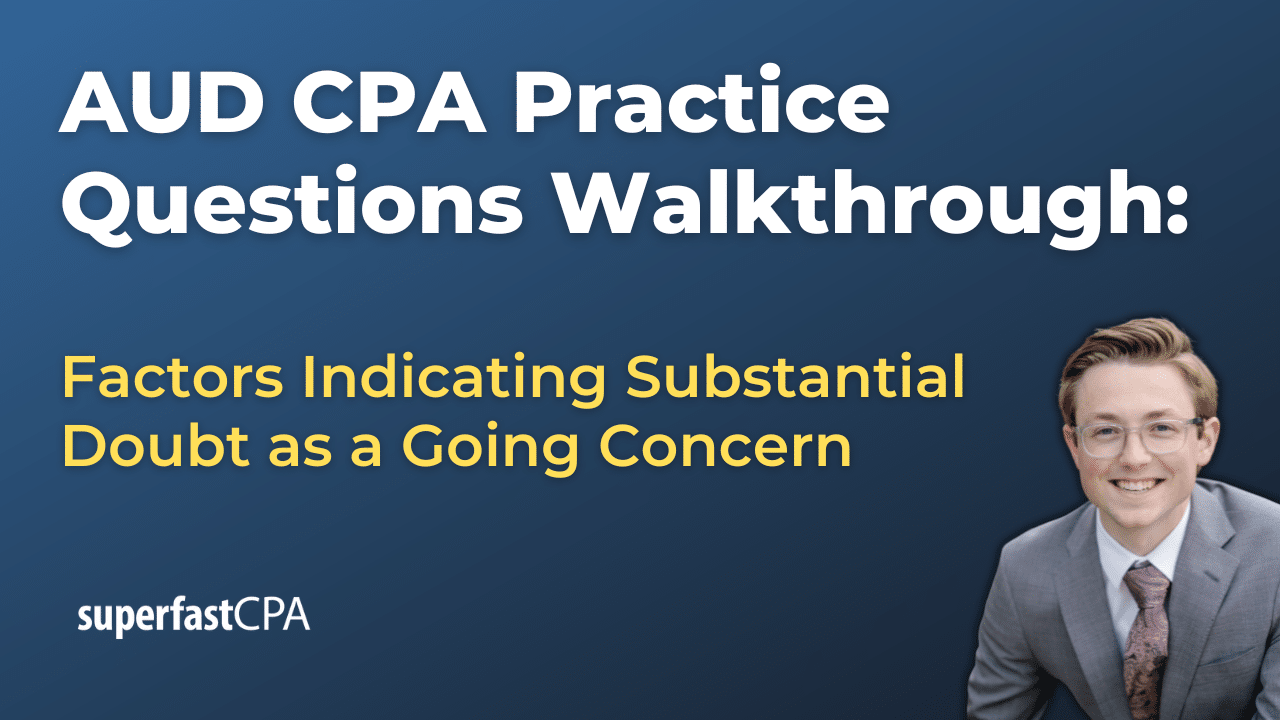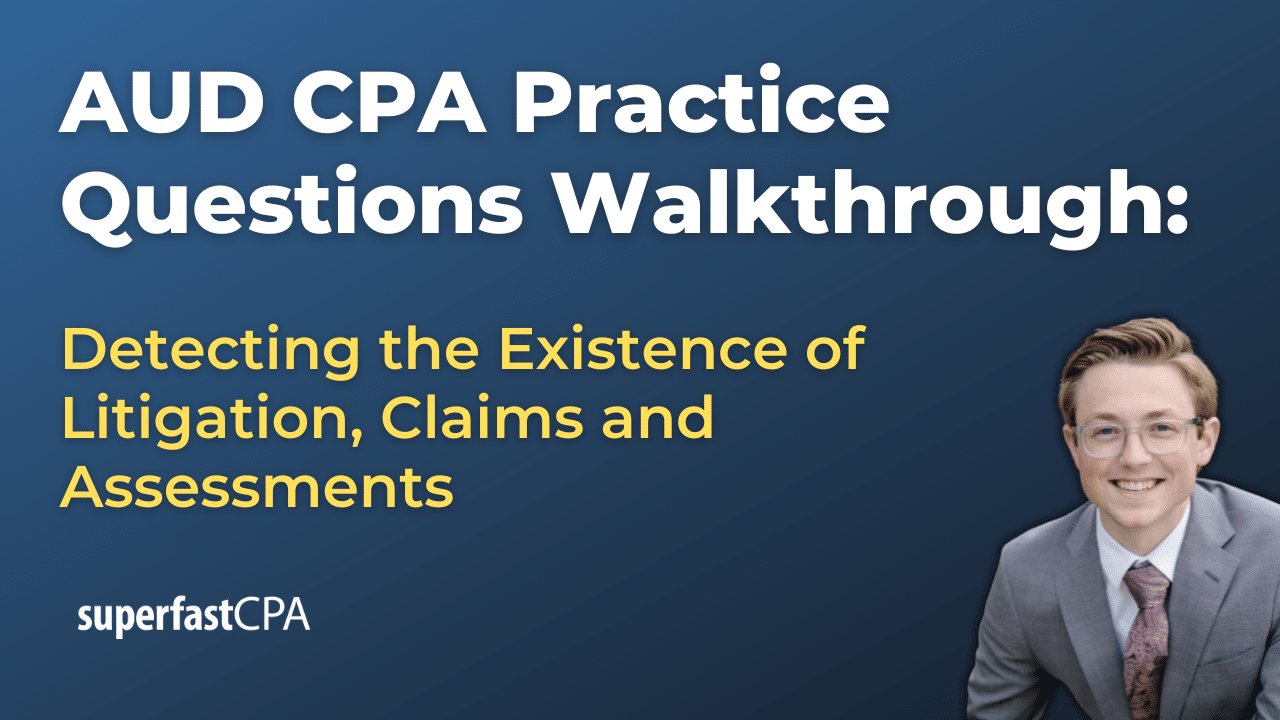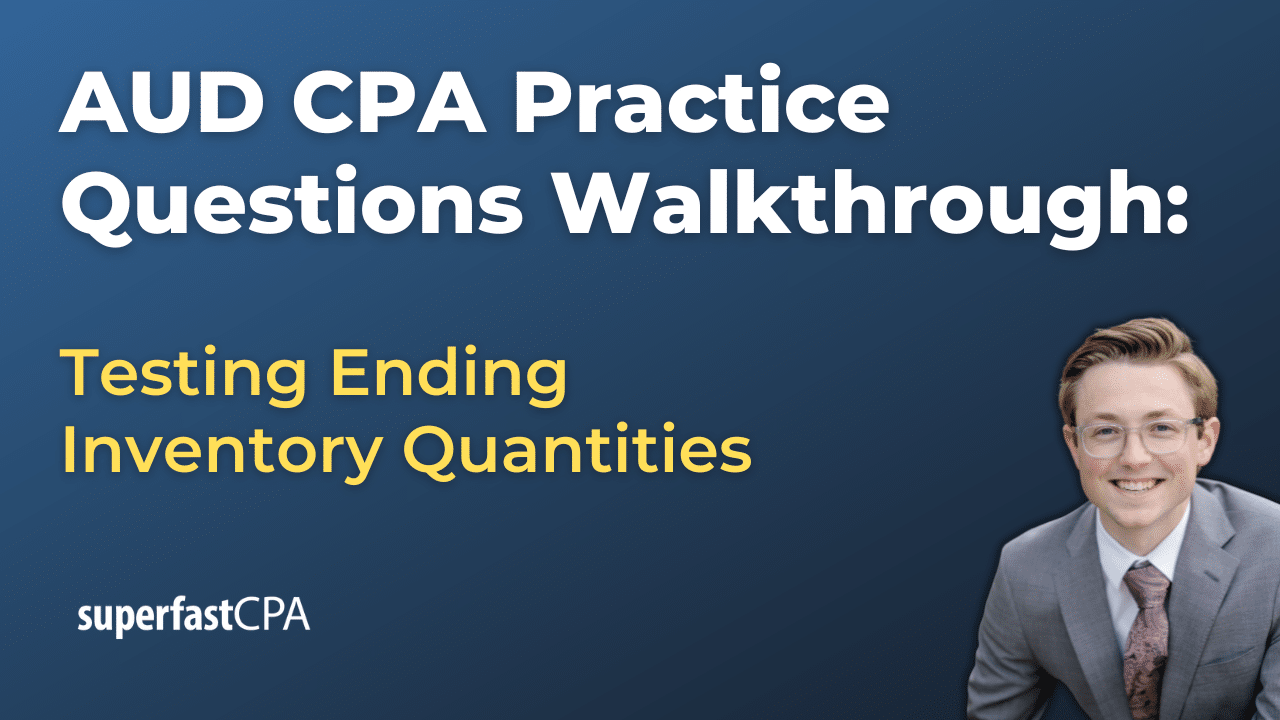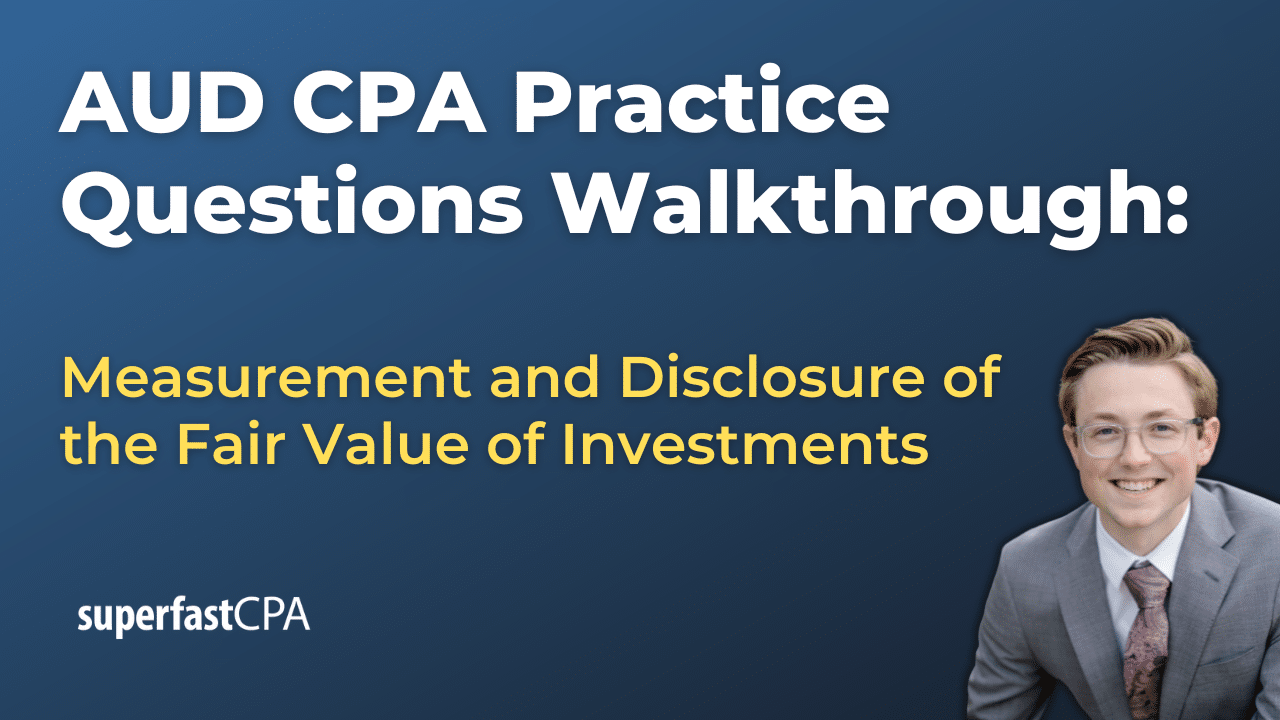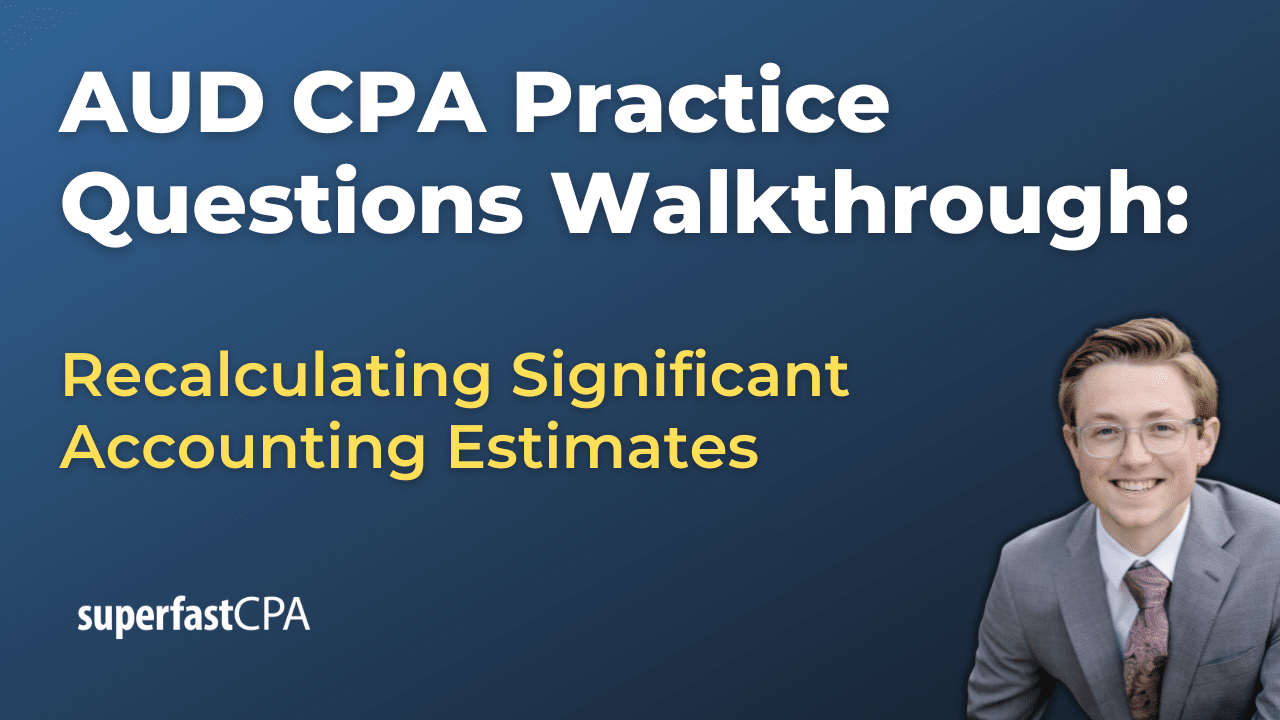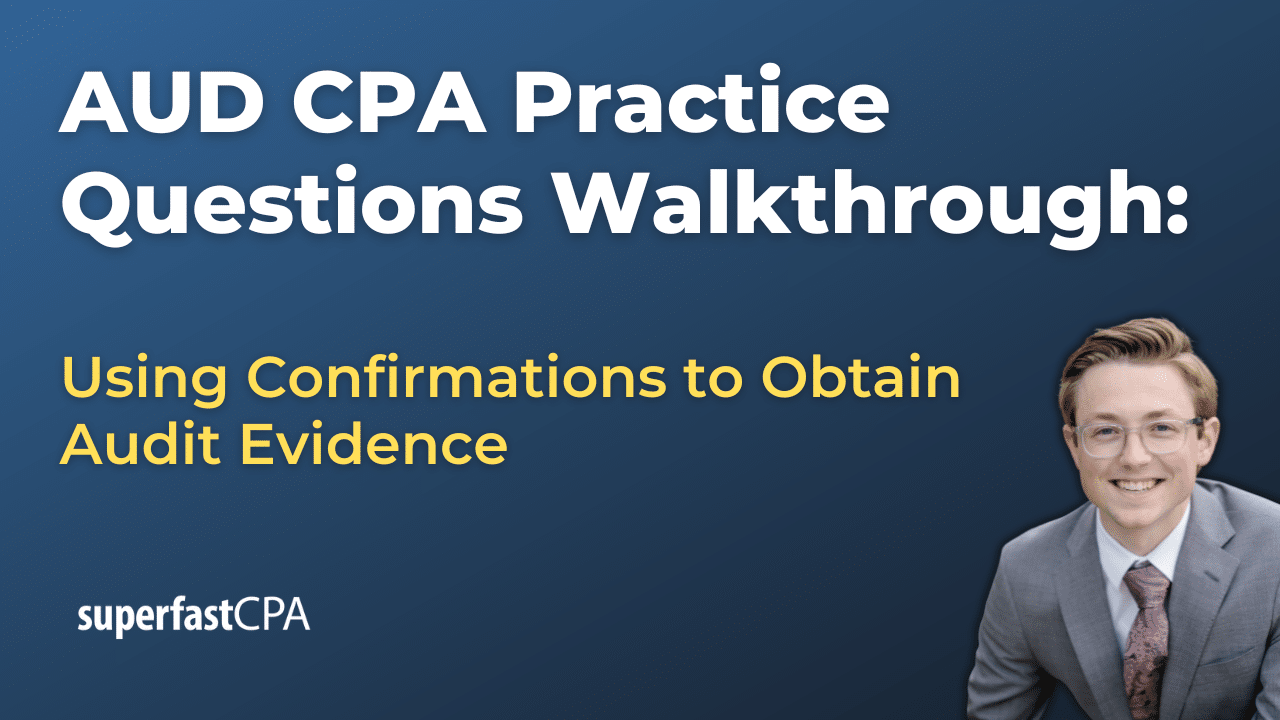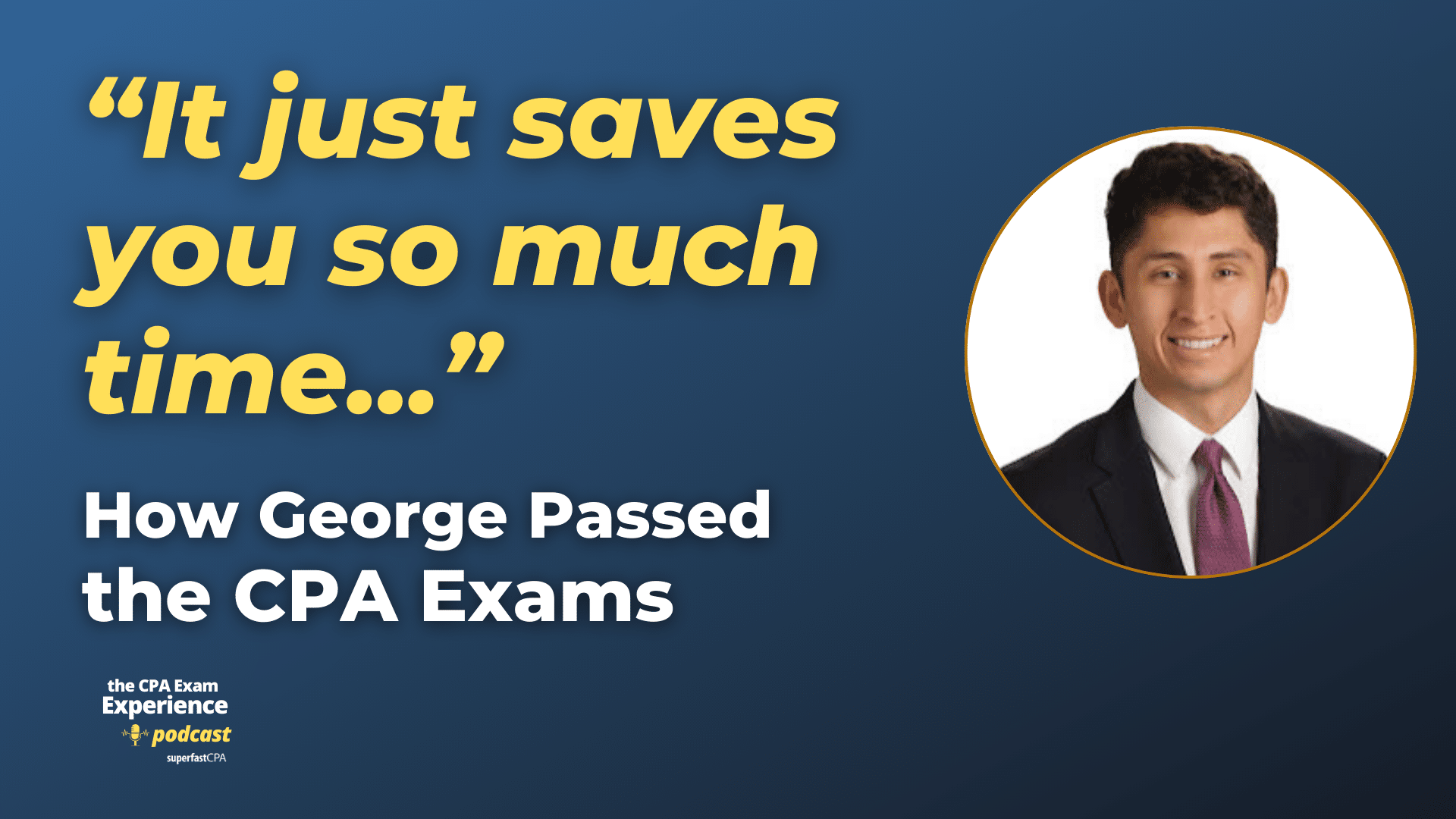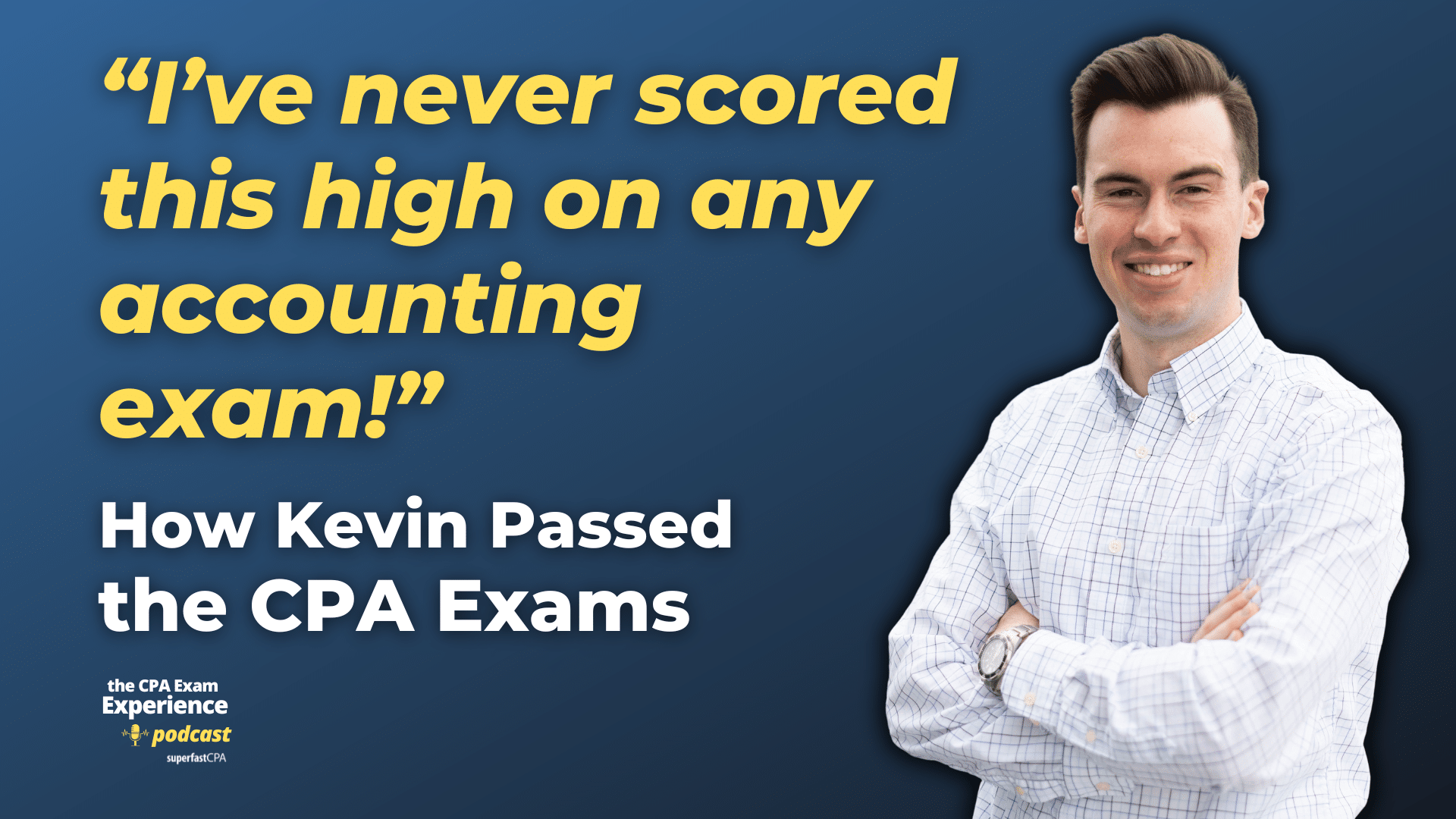In this video, we walk through 5 AUD practice questions teaching about analyzing information to be used as audit evidence. These questions are from AUD content area 3 on the AICPA CPA exam blueprints: Performing Further Procedures and Obtaining Evidence
The best way to use this video is to pause each time we get to a new question in the video, and then make your own attempt at the question before watching us go through it.
Also be sure to watch one of our free webinars on the 6 “key ingredients” to an extremely effective & efficient CPA study process here…
Analyzing Information to be Used as Audit Evidence
Auditors must apply professional skepticism and professional judgment when analyzing audit evidence to determine whether it is relevant, reliable, authentic, and whether it corroborates or contradicts management’s assertions. Evaluating audit evidence properly ensures the auditor’s opinion is well-supported and not based on assumptions or incomplete data.
Reliability of Audit Evidence
Reliability refers to how much confidence an auditor can place in the evidence obtained. The source, nature, and circumstances under which evidence is gathered all affect its reliability.
Factors That Strengthen Reliability
- External Sources: Evidence obtained from independent parties, such as banks or suppliers, is more reliable than information generated internally by management.
- Effective Internal Controls: When a company has strong internal controls, its internal records become more reliable. Weak controls reduce reliability.
- Direct Auditor Knowledge: Evidence obtained directly by the auditor, such as physical inventory observations, is stronger than information provided by the client.
Example: A bank confirmation received directly from the financial institution provides more reliable evidence of cash balances than a reconciliation prepared by the company’s accounting team. If the company has strong internal controls, its records are more trustworthy than those from an entity with poor controls.
Common Misconception: The type of accounting system used does not determine the reliability of evidence. Reliability depends on the source and controls, not whether financial data is generated by a manual or automated system.
Relevance of Audit Evidence
Relevance depends on whether the evidence directly supports the specific assertion being tested. Even if evidence is reliable, it must also align with the audit objective.
Factors That Influence Relevance
- Assertion Being Tested: Evidence must be selected based on whether it addresses existence, completeness, valuation, or another financial statement assertion.
- Timing of the Audit Procedure: Some evidence, such as inventory counts, may only be relevant at a specific point in time.
- Nature of the Audit Procedure: Substantive procedures provide more relevant evidence when risks are high, while analytical procedures may be sufficient in low-risk areas.
Example: When testing the completeness of accounts payable, reviewing vendor invoices for unrecorded liabilities is relevant. Confirming balances with suppliers primarily tests existence, making it less relevant for completeness.
Common Pitfall: Collecting large amounts of evidence without ensuring it directly relates to the assertion being tested.
Authenticity of Audit Evidence
Authenticity determines whether audit evidence is genuine and free from manipulation. Even if evidence appears reliable and relevant, auditors must verify that it has not been falsified or altered.
Evaluating Authenticity
- Identifying Red Flags: Unusual document formatting, identical timestamps across multiple transactions, or missing supporting details can indicate potential issues.
- Independent Verification: Confirming the details of transactions with third parties can help validate the authenticity of documents.
- Examining Timing and Context: Transactions occurring near the end of a reporting period should be scrutinized for signs of manipulation.
Example: An auditor reviewing a revenue contract notices inconsistent formatting and an electronic signature timestamp that matches several other contracts. Contacting the customer directly to verify the contract’s legitimacy would help confirm authenticity.
Common Pitfall: Accepting documents at face value without investigating irregularities or verifying legitimacy with independent sources.
Corroborating Evidence and Management Representations
Management’s representations are an essential part of financial reporting, but they require independent corroboration to ensure they are not biased or misleading.
Best Practices for Corroborating Management’s Assertions
- Comparing Internal and External Evidence: Matching management’s explanations with third-party documentation enhances reliability.
- Using Multiple Independent Sources: Strong evidence comes from various sources that lead to the same conclusion.
- Challenging Subjective Estimates: When management provides estimates, auditors should test assumptions using industry data and historical trends.
Example: A CFO claims that an increase in year-end sales is due to strong demand. Instead of relying solely on this statement, the auditor should verify sales invoices, shipping records, and customer confirmations to ensure revenue recognition is appropriate.
Common Pitfall: Accepting management’s explanations without seeking independent confirmation.
Sufficiency and Appropriateness of Audit Evidence
Auditors must determine whether the evidence collected is both sufficient and appropriate to support the audit opinion.
Key Considerations
- Professional Judgment: The auditor—not a checklist—determines whether enough evidence has been gathered.
- Audit Risk Assessment: Higher-risk areas require stronger, more persuasive evidence.
- Mix of Evidence Types: A combination of external, direct, and independent evidence is more persuasive than a large volume of weaker evidence.
Example:
An auditor evaluating inventory valuation gathers:
- Physical inventory count observations (direct, independent evidence).
- Vendor invoices for material costs (third-party documentation).
- Management’s internal cost calculations (internally generated).
Even with multiple types of evidence, professional judgment is required to assess whether the combination is sufficient and appropriate.
Common Misconception: Gathering large amounts of evidence does not guarantee sufficiency—quality matters more than quantity.
Applying professional skepticism and judgment when analyzing audit evidence ensures that auditors rely on relevant, reliable, and authentic information. Proper evaluation of evidence strengthens audit quality and improves the reliability of financial reporting.

